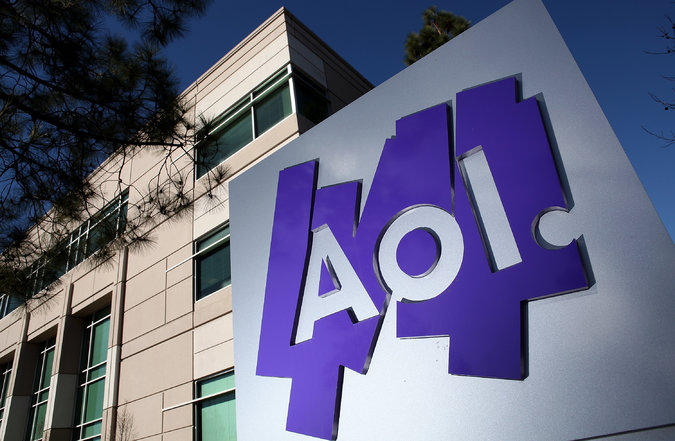AOL had been the frequent subject of takeover speculation by Yahoo, another early giant of online media.
“It’s the tip of the tip of the tail, and it is clearly not going to wag the whole dog,” analysts with MoffettNathanson wrote in a note. “Verizon is still, first and foremost, a wireless phone company.”
The AOL that Verizon is buying is a shadow of its former self, managing a small collection of media and technology properties.
It was spun off from Time Warner in 2009, and today its most visible brand is The Huffington Post, a network of domestic and international news sites run by Ms. Huffington. In recent months, AOL considered spinning off The Huffington Post. It is unclear how Verizon’s acquisition will affect those plans.
Moreover, Verizon could quickly dismantle its new acquisition, selling off smaller units including the dial-up Internet business.
Whatever it does with the peripheral pieces of AOL, it is clear that Verizon’s focus is on the video and advertising technology.
“Verizon’s vision is to provide customers with a premium digital experience based on a global multiscreen network platform,” Mr. McAdam, Verizon’s chief executive, said in a statement. “This acquisition supports our strategy to provide a cross-screen connection for consumers, creators and advertisers to deliver that premium customer experience.”
Verizon covets two main pieces of AOL’s mobile and video technology offerings. One is its big network of original video content, which is home to lucrative online video advertising.
The other is its so-called programmatic advertising business, a system that matches online advertisers with consumers across different platforms, and collects valuable data along the way.
AOL last month revealed a new version of this product, called One, placing it in ever more direct competition with Google and Facebook. And already, AOL has found success, with big companies including Bank of America, General Motors and Verizon signing up for the product.
“The world is going mobile, and it is going there really quickly,” Mr. Armstrong, AOL’s chief executive, said in an interview. “The combination will give us a big chair at a big table. We have assets that can cleanly plug in and scale on top of Verizon’s platform.”
AOL and Verizon have been partners on several projects in recent years. Last summer, at the Allen & Company retreat in Sun Valley, Idaho, Mr. McAdam and Mr. Armstrong shared a lunch, where they began acquisition talks. It was at that same Sun Valley conference in 1999 that the chiefs of Time Warner and AOL first discussed their merger.
Much has changed since then. But 16 years later, the rationale for Verizon’s acquisition of AOL is strikingly similar.
Once again, the way consumers are consuming content and advertising is undergoing an epochal change. Once again, big companies are striking hasty deals in a bid to navigate the future.
But instead of aiming at desktop computers, Verizon and AOL want to put content and new advertising technology on today’s most ubiquitous computing device, the mobile phone.
“The logic is clear, and it’s the same logic as AOL and Time Warner,” Mr. Miller said. “The logic then was to put to together content, distribution and access, and it still is. It’s the same today.”












